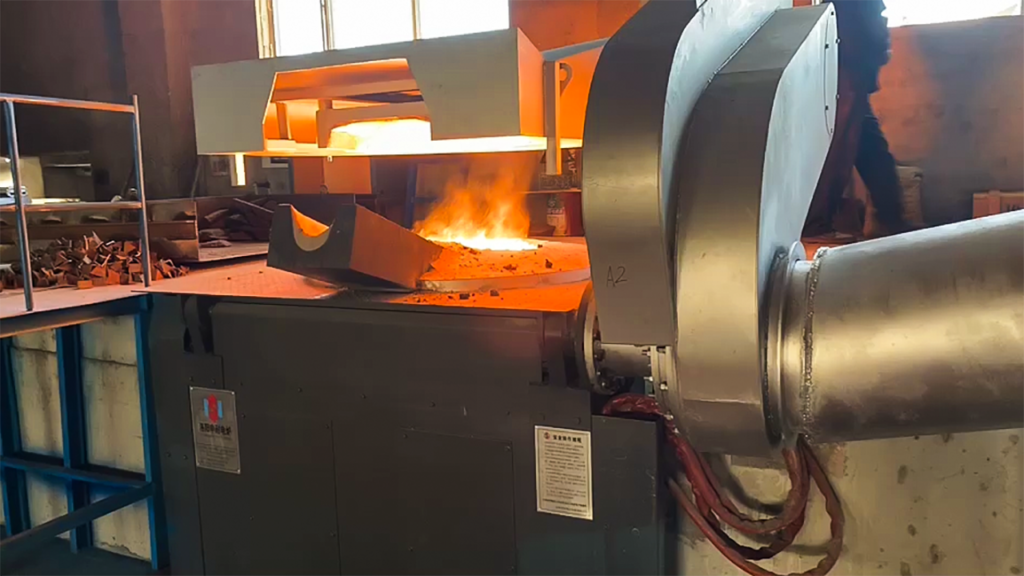- Tel:+8613007564317
- Email:[email protected]
News
1) Fault phenomenon: The device cannot be started. Only the DC current meter has an indication when starting, and there is no indication of DC voltage and intermediate frequency voltage. Analysis: a. The inverter trigger pulse has a pulse phenomenon; b. Inverter thyristor breakdown; c. Capacitor breakdown; d. The load has a short circuit and excerpt …

1) Fault phenomenon: The device cannot be started. Only the DC current meter has an indication when starting, and there is no indication of DC voltage and intermediate frequency voltage.
Analysis:
a. The inverter trigger pulse has a pulse phenomenon;
b. Inverter thyristor breakdown;
c. Capacitor breakdown;
d. The load has a short circuit and grounding phenomenon;
e. The intermediate frequency signal sampling loop has an open circuit or a short circuit.
2) Fault phenomenon: It is difficult to start. After starting, the intermediate frequency voltage is more than twice the DC voltage, and the DC current is too large.
Analysis:
a. The IGBT is damaged in the inverter circuit;
b. The inverter thyristor has a non-conducting, that is, "three legs" work;
c. The IF signal sampling loop has an open circuit or a polarity error phenomenon;
d. The inverter leads the front angle phase shifting circuit to malfunction;
3) Fault phenomenon: It is difficult to start, DC voltage after starting, it is difficult to reach full load or it is difficult to get close to full load, and the reactor vibrates greatly and the sound is dull.
Analysis:
e. Rectifier thyristor open circuit, breakdown, soft breakdown or electrical parameter performance degradation
f. Missing a set of rectified pulses
g. Rectifier thyristor gate open or shorted
4) Fault phenomenon: It can be started, but it will stop immediately after starting, and the equipment will be continuously restarted.
Analysis:
h. The lead angle is too small;
i. The load oscillation frequency is at the edge of its excitation frequency
5) Fault phenomenon: After the equipment is started, when the power rises to a certain value, it is easy to over-current protection. Sometimes the original thyristor is burned out and restarted. The phenomenon remains the same.
Analysis:
j. If an overcurrent is generated at a low voltage immediately after startup, the inverter lead angle is too small for the thyristor to be reliably turned off.
k. Inverter thyristor water cooling jacket cooling effect is reduced
l. The channel connection wire has poor contact
6) Symptom: Nothing happens when the device starts up, and the control board lacks equal brightness.
Analysis:
Fast-blow blown
7) Fault phenomenon: The DC current has reached the rated value when the equipment is running, but the DC voltage and the intermediate frequency voltage are low.
Analysis:
This phenomenon is not caused by the IF power failure, but due to the low load impedance.
a. The series capacitor is damaged
b. The sensor has a short circuit between the turns
8) Fault phenomenon: When the equipment is running, the DC voltage and the intermediate frequency voltage have reached the rated value, but the DC current is small and the power is low.
Analysis:
This phenomenon is just the opposite of 7) the fault phenomenon, which is caused by the high load impedance.
a. The compensation amount of the load compensation capacitor is insufficient.
b. The contact resistance of the tank connection node is too large to clean the dust.
9) Fault phenomenon: The equipment is running normally, the DC current indication is too high. If the current is set at the rated value, the voltage is too low, and the indication of the de-power meter is inconsistent with the indication of the current voltmeter.
Analysis:
This phenomenon is usually caused by the dirt and oxide layers of the shunt and wiring increasing the contact resistance and increasing the voltage generated on the shunt.
10) Symptom: The equipment is operating normally, but there is no response and no protection after starting. Instructions.
Analysis:
a. The IF start switch is damaged.
b. Protection circuit failure, usually there is a problem with the frequency sweep circuit integration block NE556 on the circuit board.
c. The given signal is interrupted in the given circuit.
We will get in touch with you as soon as possible
